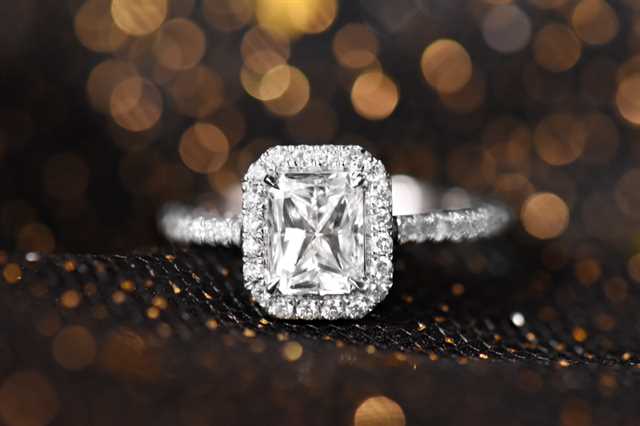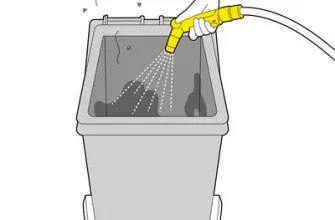
White gold jewellery is a beautiful and versatile accessory that you can wear for any occasion. Whether it’s necklaces, pendants, rings or earrings, white gold jewellery can add a touch of elegance to your outfit. However, over time, white gold jewellery may start to lose its shine, turning yellowish and losing its sparkle. But fret not! With a little care and some easy tips, you can keep your white gold jewellery looking as good as new.
1. Use a gentle cleaning solution
When cleaning your white gold jewellery, avoid using harsh chemicals or abrasive cleaning solutions that can cause damage. Instead, mix a small amount of mild soap with warm water in a bowl. Gently place your white gold jewellery in the solution and let it soak for a few minutes. Then, using a soft cloth, gently wipe away any dirt or grime.
2. Avoid chemicals and spray
If possible, avoid wearing your white gold jewellery when you’re using chemicals or spray products, such as hair spray or perfume. These chemicals can react with the metal alloys in your white gold jewellery, causing it to tarnish or turn yellow.
3. Use a rhodium-plated cloth
If your white gold jewellery has a rhodium plating, which is the outer layer of the metal, you can use a rhodium-plated cloth to gently polish it. This will help maintain its shine and keep it looking new.
4. Rinse and dry properly
After cleaning your white gold jewellery, make sure to rinse it well under lukewarm water to remove any soap residue. Then, pat it dry with a clean towel. Avoid rubbing your white gold jewellery too hard, as it may cause scratches or damage.
FAQs on cleaning white gold jewellery:
Q: What should I do if my white gold jewellery turns yellow?
A: If your white gold jewellery turns yellow, it may be because the rhodium plating has worn off. To fix this, you can take your jewellery to a professional jeweler and have it re-plated with rhodium.
Q: How often should I clean my white gold jewellery?
A: It’s a good idea to clean your white gold jewellery every few months or as needed. Regular cleaning will help maintain its sparkle and keep it looking its best.
By following these simple tips and taking proper care of your white gold jewellery, you can ensure that it stays looking beautiful for years to come. So go ahead and enjoy wearing your white gold necklaces, rings, earrings, and bracelets with confidence and style!
- Importance of Cleaning White Gold Jewellery
- Why Does White Gold Tarnish?
- How to Clean Your White Gold Jewellery
- FAQs About White Gold Jewellery Cleaning
- Why You Should Clean Your Wedding Ring Regularly
- Common Causes of Yellowing in White Gold
- Chemical Reactions
- Wear and Tear
- Rhodium Plating Wearing Off
- How to Prevent Yellowing
- Understanding the Factors Behind Discoloration
- The Metal: White Gold
- Cleaning and Care Tips
- Frequently Asked Questions
- Easy Tips for Cleaning Your White Gold Jewellery
- 1. Use a Soft Cloth for Polishing
- 2. Clean with a Mild Soap Solution
- 3. Avoid Using Chemicals and Harsh Cleaners
- 4. Consider Professional Cleaning
- 5. Store Your Jewellery Properly
- FAQs
- Step-by-Step Guide to Keep Your Rings Sparkling
- 1. Gather your materials
- 2. Prepare the cleaning solution
- 3. Soak your rings
- 4. Clean with a toothbrush
- 5. Rinse and dry
- 6. Optional: Add extra shine with a polishing cloth
- 7. Store properly
- Avoiding Common Mistakes in Cleaning White Gold
- Video:
- How to Clean Tarnish Off Your Jewelry Using Baking Soda
Importance of Cleaning White Gold Jewellery
White gold jewellery is a beautiful and popular choice for rings, earrings, pendants, and more. However, over time, this metal can become dull and tarnished, losing its shine and allure. That’s why it’s important to regularly clean your white gold jewellery to maintain its beautiful appearance and value.
Why Does White Gold Tarnish?

White gold is an alloy made by mixing pure gold with other metals, such as silver, palladium, or platinum. To enhance the white appearance, most white gold jewellery is plated with a thin layer of rhodium. Over time, this rhodium plating can wear off, exposing the underlying yellowish gold color. This can make your jewellery look dull and less appealing.
How to Clean Your White Gold Jewellery
Here is a simple step-by-step guide on how to clean your white gold jewellery:
- Prepare a cleaning solution by mixing a few drops of mild dish soap with lukewarm water in a bowl.
- Soak your white gold jewellery in the soapy water for a few minutes to loosen any dirt or debris.
- Gently scrub your jewellery using a soft-bristle toothbrush or a cloth. Avoid using a toothbrush with hard bristles, as it may scratch the metal.
- Rinse your jewellery under warm running water to remove any soap residue.
- Dry your jewellery thoroughly with a soft towel.
- If your white gold jewellery is rhodium-plated, you can use a rhodium cleaning spray to restore its shine. Follow the instructions on the spray bottle carefully.
- For extra shine, you can also use a polishing cloth specifically designed for white gold jewellery. Simply rub the cloth gently over the metal to bring back its luster.
FAQs About White Gold Jewellery Cleaning
Q: Can I clean my white gold engagement ring?
A: Yes, you can clean your white gold engagement ring using the same cleaning process mentioned above. However, be careful not to use any harsh chemicals or abrasive cleaners.
Q: How often should I clean my white gold jewellery?
A: It is recommended to clean your white gold jewellery every few months to keep it looking its best. However, if you notice any signs of tarnish or dullness, it’s a good idea to clean it right away.
Q: Can I use ultrasonic cleaners for cleaning white gold jewellery?
A: While ultrasonic cleaners can be effective, they are not recommended for white gold jewellery as the vibrations can loosen gemstones or degrade the rhodium plating.
By following these simple cleaning tips and maintaining your white gold jewellery regularly, you can ensure that it retains its beauty and value for years to come.
Why You Should Clean Your Wedding Ring Regularly
Your wedding ring is a symbol of love and commitment, and it deserves to shine just as bright as the day you said “I do”. Regularly cleaning your ring not only keeps it looking its best, but it also helps maintain its value and longevity. Here are a few reasons why cleaning your wedding ring should be part of your regular routine:
- To maintain its white gold brilliance: White gold is a beautiful metal that adds a sophisticated touch to any wedding ring. However, over time, it can start to look a bit yellowish or dull. By regularly cleaning your ring, you can remove any dirt, oils, and debris that may be making it lose its luster.
- To avoid tarnish and turning: White gold often has a thin layer of rhodium plating, which gives it that shiny, white appearance. However, this plating can wear off over time, causing the gold to appear yellow and tarnished. Regular cleaning can help remove any tarnish and keep your ring looking its best.
- To care for diamond and other gemstones: If your wedding ring features diamonds or other precious gemstones, regular cleaning is essential to ensure their sparkle and brilliance. Dirt, oils, and everyday wear can dull the shine of these stones, so gentle cleaning can help restore their beauty.
- To remove everyday dirt and grime: Our hands come into contact with various substances throughout the day, including lotions, soaps, and oils. These substances can build up on your ring, making it look dirty and dull. Regular cleaning helps remove this buildup, keeping your ring looking fresh and clean.
- To maintain the metal and prevent damage: Wedding rings are often made from a combination of metals, including gold and other alloys. Regular cleaning helps prevent damage to these metals, ensuring that your ring stays in good condition for years to come.
Now that you know the importance of cleaning your wedding ring, let’s discuss the best method for keeping it sparkling:
- Gently clean with warm soapy water: Fill a bowl with warm water and add a few drops of mild soap. Soak your ring for a few minutes to loosen any dirt, then use a soft brush to gently scrub the metal. Rinse the ring thoroughly to remove all soap residue, and then pat it dry with a soft towel.
- Avoid harsh chemicals and jewelry cleaning solutions: While there are many commercial jewelry cleaning solutions available, some of them may contain harsh chemicals that can be damaging to your ring. It’s best to stick with mild soap and water to ensure the safety of your ring.
- Take care when using ultrasonic cleaning: Ultrasonic cleaners can be effective for cleaning jewelry, but they may not be suitable for all types of gemstones and metals. If your ring features delicate gemstones or has any type of unique setting, it’s best to avoid ultrasonic cleaning to prevent damage.
By following these simple cleaning tips, you can ensure that your wedding ring always looks its best. Remember to clean your ring regularly and take proper care of it, and it will continue to shine for years to come!
Common Causes of Yellowing in White Gold
White gold is a popular metal choice for jewelry due to its elegant appearance and versatility. However, over time, it may develop a yellowish tint that can diminish its beauty. Understanding the common causes of yellowing in white gold can help you prevent and address this issue, ensuring that your jewelry always looks its best.
Chemical Reactions
One of the main reasons why white gold may turn yellow is due to chemical reactions. The alloys used to make white gold, such as palladium or nickel, can react with certain substances, causing the metal to tarnish and turn yellow. This can happen when white gold comes into contact with chemicals found in everyday items like soaps, lotions, perfumes, and cleaning agents.
Wear and Tear
Another common cause of yellowing in white gold is everyday wear and tear. As you wear your white gold jewelry, it can develop scratches and abrasions that expose the underlying yellow gold or other metals used in the alloy. This can result in a yellowish appearance over time.
Rhodium Plating Wearing Off
Rhodium plating is often used to create a bright white finish on white gold jewelry. However, this plating can wear off over time, exposing the yellowish undertones of the metal underneath. Regular polishing and cleaning can help maintain the rhodium plating and prevent yellowing.
How to Prevent Yellowing
- Avoid wearing your white gold jewelry when you are using harsh chemicals or cleaning agents.
- Remove your white gold jewelry before applying lotions, perfumes, or other beauty products.
- Regularly clean and polish your white gold jewelry to remove any dirt or oils.
- Ensure that your white gold jewelry is properly rhodium plated, as this can help prevent yellowing.
- If your white gold jewelry has turned yellow, consider having it professionally re-plated with rhodium to restore its original color.
By following these tips and taking good care of your white gold jewelry, you can keep it looking beautiful and prevent yellowing. Remember to consult with a professional jeweler if you have any concerns or questions about cleaning and maintenance.
Understanding the Factors Behind Discoloration
If you have white gold jewellery, you may have noticed that over time, it can start to lose its shine and turn yellow. This discoloration is a common occurrence and can happen for several reasons. Understanding these factors can help you keep your white gold jewellery looking clean and bright for longer.
The Metal: White Gold
White gold is an alloy that is made by mixing pure gold with other metals. The most common metals used in white gold are silver, palladium, and nickel. The reason why white gold turns yellow is because of the natural color of pure gold. Therefore, to make white gold, the alloy is coated with a layer of rhodium plating. This plating gives white gold its shiny, white appearance.
Why Does It Turn Yellow?
Over time, the rhodium plating on white gold jewellery can wear off, exposing the underlying alloy. This is when the discoloration occurs, as the natural yellowish color of gold starts to show through. Other factors that can cause white gold to turn yellow include exposure to chemicals, such as chlorine, and natural oils from the skin.
Cleaning and Care Tips
To keep your white gold jewellery looking its best, follow these cleaning and care tips:
- Gently clean your white gold jewellery using a soft cloth or a toothbrush with soft bristles.
- Avoid using harsh chemicals or abrasive cleaners, as they can damage the metal.
- If your white gold jewellery has diamonds or other gemstones, be careful when cleaning them. Use a mild soap and water solution or a jewelry cleaning solution specifically designed for gemstones.
- If your white gold jewellery has a rhodium-plated finish, avoid using polishing cloths, as they can remove the rhodium plating.
- After cleaning, rinse your white gold jewellery with warm water and dry it with a soft towel.
Frequently Asked Questions
| Q: | Why does my white gold jewellery turn yellow? |
| A: | White gold turns yellow when the rhodium plating wears off and exposes the underlying alloy. |
| Q: | Can I re-plate my white gold jewellery to restore its white appearance? |
| A: | Yes, you can have your white gold jewellery re-plated with rhodium to restore its shiny, white appearance. |
| Q: | How often should I re-plate my white gold jewellery? |
| A: | It depends on how often you wear your white gold jewellery and how quickly the rhodium plating wears off. As a general guideline, re-plating every 1-2 years is recommended. |
Easy Tips for Cleaning Your White Gold Jewellery
White gold jewellery is a beautiful and elegant choice for many occasions, whether it’s pendants, engagement rings, earrings, or necklaces. However, over time, white gold can start to lose its shine and develop a yellowish tint. To keep your white gold jewellery looking its best, regular cleaning and maintenance is important. Here are some easy tips to help you keep your white gold jewellery sparkling:
1. Use a Soft Cloth for Polishing
When cleaning your white gold jewellery, always use a soft cloth to gently polish the metal. A microfiber cloth or a clean cotton cloth works well for this purpose. Avoid using abrasive materials or harsh chemicals that may damage the metal or any gemstones.
2. Clean with a Mild Soap Solution
To clean your white gold jewellery, you can create a mild soap solution by mixing a few drops of mild dish soap with warm water. Soak your jewellery in this solution for a few minutes, then gently scrub it with a soft-bristled toothbrush. Rinse thoroughly with clean water and pat dry with a towel.
3. Avoid Using Chemicals and Harsh Cleaners

While it’s important to keep your white gold jewellery clean, it’s equally important to avoid using harsh cleaners or chemicals that may damage the metal or any gemstones. Avoid using bleach, chlorine, or ammonia-based cleaners. Stick to mild soap solutions or jewellery-specific cleaning products.
4. Consider Professional Cleaning
If your white gold jewellery has become heavily tarnished or dirty, it may be worth considering professional cleaning. Many jewellers offer cleaning services that can restore the shine and brilliance of your jewellery. Professional cleaning is especially recommended for white gold jewellery with delicate or intricate designs.
5. Store Your Jewellery Properly
To avoid unnecessary wear and tear, it’s important to store your white gold jewellery properly. When not in use, keep your jewellery in a soft pouch or a jewellery box with separate compartments to prevent scratches and tangling. Avoid storing different types of jewellery together, as they may rub against each other and cause damage.
FAQs
- What is white gold? White gold is an alloy created by mixing pure gold with other metals, such as silver, palladium, or platinum. It is commonly used in jewellery-making because it has a white color that resembles platinum, but at a more affordable price.
- Why does white gold turn yellow? Over time, the rhodium plating on white gold may wear off, exposing the yellowish color of the underlying alloys. This is a natural process and can be easily remedied by re-plating the white gold with rhodium.
- How often should I clean my white gold jewellery? It is recommended to clean your white gold jewellery every few months to keep it looking its best. However, if your jewellery gets dirty or tarnished more frequently due to everyday wear, you may need to clean it more often.
By following these easy tips, you can ensure that your white gold jewellery stays looking as good as new. Remember to always handle your jewellery with care, avoid exposing it to harsh chemicals or excessive heat, and seek professional cleaning when needed. With proper care, your white gold jewellery will continue to shine and be worth showing off on any occasion.
Step-by-Step Guide to Keep Your Rings Sparkling
If you own gold or platinum rings, you know how important it is to keep them clean and sparkling. Over time, these precious metals can become dull and lose their shine. But don’t worry, with a little care and maintenance, you can keep your rings looking good as new. Here’s a step-by-step guide to help you keep your rings sparkling:
1. Gather your materials
Before you begin the cleaning process, make sure you have everything you need. You’ll need a soft towel or cloth, mild soap, warm water, a small bowl, and a toothbrush with soft bristles. Make sure the toothbrush is designated only for cleaning your jewelry.
2. Prepare the cleaning solution
Fill the small bowl with warm water and add a few drops of mild soap. Gently mix the soap and water together to create a soapy solution.
3. Soak your rings
Place your rings in the soapy water solution and let them soak for about 10-15 minutes. This will help loosen any dirt or residue on the surface of the rings.
4. Clean with a toothbrush
After soaking, take a soft toothbrush and gently scrub the surface of your rings. Make sure to pay attention to any hard-to-reach places. Be gentle and avoid using excessive pressure to prevent scratching the metal.
5. Rinse and dry
Once you’ve finished scrubbing, rinse your rings under running water to remove any remaining soap residue. Then, pat them dry with a soft towel or cloth. Make sure to dry them thoroughly to prevent water spots.
6. Optional: Add extra shine with a polishing cloth
If you want to enhance the shine of your rings even further, you can use a jewelry polishing cloth. Gently rub the cloth over the surface of the rings in a circular motion to bring out their natural luster.
7. Store properly
After cleaning, make sure to store your rings in a safe and dry place. You can use small jewelry boxes or pouches to protect them from dust and scratches.
By following these simple steps, you can keep your rings sparkling and looking their best. Remember to clean them regularly to maintain their shine and beauty.
Avoiding Common Mistakes in Cleaning White Gold
White gold jewellery, especially engagement rings, are a popular choice for their elegant appearance. However, to keep them looking their best, proper cleaning and care are essential. Here are some common mistakes to avoid when cleaning white gold:
- Avoid using harsh chemicals: When cleaning white gold, it’s important to use gentle cleaning methods and avoid harsh chemicals. Chemicals such as bleach, ammonia, and chlorine can damage the metal and cause it to tarnish.
- Never use abrasive materials: Avoid using rough or abrasive materials, such as scouring pads or toothbrushes, as they can scratch the surface of the white gold.
- Don’t forget the rhodium plating: Many white gold pieces have a rhodium plating, which gives them their bright, white appearance. However, over time, this plating can wear off. When cleaning white gold, be gentle to avoid wearing away the rhodium plating.
- Avoid exposing white gold to harsh conditions: White gold is a delicate metal and can be damaged by exposure to harsh conditions, such as extreme heat or chemicals. Remove your white gold jewellery before using cleaning products or engaging in activities that could cause damage.
- What to do if your white gold turns yellowish: If your white gold jewellery starts to look yellowish, it may be due to the rhodium plating wearing off. To restore its white appearance, you can have it re-plated with rhodium. Consult a jeweller to get the best advice for your specific piece.
- Removing tarnish from white gold: If your white gold jewellery has tarnish, you can gently polish it with a soft cloth. Avoid using abrasive polishes or cleaning agents, as they can damage the metal.
By following these tips, you can ensure your white gold jewellery stays looking beautiful for years to come. Remember to always handle your white gold jewellery with care and seek professional help if needed.








